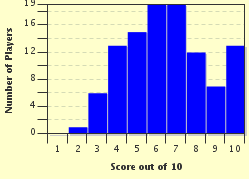Quiz Answer Key and Fun Facts
1. Though not Norman Rockwell's first illustration job, he was still in his teens when he accepted the job of art editor for "Boys' Life". Which of these groups published "Boys' Life"?
2. When Norman Rockwell went to enlist in the U.S. Navy during World War I, why was he initially rejected?
3. Norman Rockwell's first marriage with Irene O'Connor ended in divorce in 1930. He met his second wife, Mary Barstow, in California. Which of the following is NOT one of the children of that union?
4. At the start of World War II, Norman Rockwell volunteered to work at the U.S. Office of War Information, but was rejected with "The last war you illustrators did the posters. This war we're going to use fine arts men, real artists." Determined to make a difference, what was his contribution?
5. Norman Rockwell had a sense of humor that his pictures for the covers of "The Saturday Evening Post" often reflected. For which of these holidays did he create covers with obvious "mistakes"?
6. One of Norman Rockwell's more famous paintings is that called "Triple Self-Portrait" which includes three separate images of himself. It also has self-portraits of painters he was inspired by. Which of these was NOT included?
7. Norman Rockwell included an image of himself in many paintings, not just the self-portraits that he painted. Did he ever author a book other than children's books?
8. A portrait was Norman Rockwell's last cover for "The Saturday Evening Post" in December 1963. The portrait was published in response to the assassination of which leader?
9. Norman Rockwell, frustrated with subject limitations, left "The Saturday Evening Post" and began working for another magazine. The picture "The Problem We all Live With" was the first that he published for which of these magazines?
10. Norman Rockwell died in 1978 at age 84. Before his death he left his art work in trust to what is now known as the Norman Rockwell Museum. Which city can the museum be found in?
Source: Author
mlcmlc
This quiz was reviewed by FunTrivia editor
bloomsby before going online.
Any errors found in FunTrivia content are routinely corrected through our feedback system.

